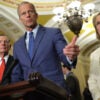Is the modern incandescent light bulb ready to retire from society and find its final resting place in the halls of the American History Museum? Politicians seem to think so, but consumer behavior indicates otherwise. According to an article in The New York Times,
Despite a decade of campaigns by the government and utilities to persuade people to switch to energy-saving compact fluorescents, incandescent bulbs still occupy an estimated 90 percent of household sockets in the United States. Aside from the aesthetic and practical objections to fluorescents, old-style incandescents have the advantage of being remarkably cheap.
The government solution to replace incandescent bulbs is to regulate them out of the marketplace and forcefully restrict consumer choice. The Energy Independence and Security Act of 2007 placed stringent efficiency requirements on incandescent bulbs in an attempt to phase them out between 2012 and 2014 and replace them with more expensive but more energy-efficient bulbs, the most popular being compact fluorescent bulbs (CFLs).
Critics of CFL bulbs argue that exposure to mercury vapor is dangerous if the bulbs are broken, and others complained about CFL bulbs causing migraines and epilepsy attacks, resulting in medical groups asking for exemptions for those with health problems. Proponents of CFL bulbs argue that the increased energy efficiency will offset the higher sticker price, but critics argue it will take an exceptionally long time where people use lights infrequently, such as closets and attics.
In effort to meet tougher regulations, the new incandescent light bulbs are also selling at record rates, but also at record prices. A new bulb presented by Philips Lighting’s Halogena Energy Savers is selling at 20 times the price of a standard bulb ($5 compared to 25 cents)—an immense price increase for a 30 percent efficiency improvement. However, the new bulbs last three times as long as a standard bulb, bringing the price ratio down to less than seven times the price of a standard bulb.
Although this law could mean the end of a century-old industry and all the jobs that go with it, bulb manufacturers are demonstrating a remarkable resilience against needless regulations through market innovation. Yet there is only so much that the industry can do to stay a step ahead of legislation, and whether incandescent bulbs will survive the government’s regulatory whip remains to be seen. A few dollars more here and there may not seem like much, but CFLs sell at around $1 each. Although fluorescent bulbs are currently not favored by households, they could soon become the chosen bulb, an unnatural leaning that will create false information for the light bulb market.
If consumers truly preferred fluorescents to incandescents, they would purchase them without any legal incentive. Yet they do not. Many prefer the soft yellow lighting of incandescents to the unnaturally white light of fluorescents. More might prefer the simple affordability of incandescents. Demand for cheap incandescent light bulbs is not going to change because of legislation (and, in fact, could lead to hoarding), so the only option left to environmentalists is to remove the incandescent light bulb from the market altogether and make it impossible for consumers to light their houses inexpensively.
This is one example of the absurdity of federal regulations and how bureaucrats pointlessly try to change human behavior. The regulatory burden grew tremendously during President George W. Bush’s tenure and is only getting worse under President Obama’s. It is a trend that restricts freedom and choice in the marketplace and costs taxpayers billions of dollars. It is a trend that the government should reverse.
Kelsey Huber co-authored this post.





























41 Replies to “The Incandescent Bulb Ban: Another Regulatory Overreach”